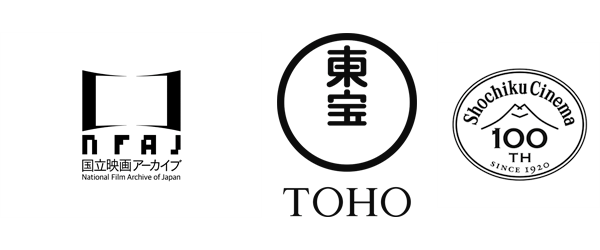Ozu described Tokyo Story as his ‘most melodramatic’ movie, an observation taken by most western commentators, dazzled by the director’s minimalist style and resolutely quotidian material, as ironic. But irony was never Ozu’s preferred tone, and his comment surely reflected the film’s uncharacteristic explicitness: this is an almost didactic film about the disintegration of Japanese family values, full of characters and incidents designed to spell out social and psychological points with diagrammatic clarity. In calling the film ‘melodramatic’, Ozu may also have had in the back of his mind the story’s origin in co-writer Kogo Noda’s memories of the 1936 Leo McCarey film Make Way for Tomorrow, which similarly contrasts the emotional stoicism of an elderly couple financially ruined in the Depression with the brash impatience of their urbanised children, but does so with a directness entirely normal in Hollywood movies.
Although it is not a precise match with any other Ozu film in theme, tone or structure, Tokyo Story obviously shares characteristics and concerns with many of them. Its interests in parent-offspring relations, in urban/rural contrasts, and in the evanescence of happiness are all entirely consonant with earlier films, from The Only Son (1936) through conservative wartime films like Brothers and Sisters of the Todo Family (1941) and There Was a Father (1942) to other films of the post-war ‘reconstruction’ like Late Spring (1949) and Early Summer (1951). It also uses most of Ozu’s well-known visual tropes, from the use of low camera positions for domestic interiors to patterns of cutting based on visual analogies rather than conventional eyeline matches. What’s different here is, again, the overall explicitness of the film’s aim. The fact that this is a film in which the main characters frequently and directly discuss the issues that confront them (for example, parents’ disappointment in their children’s levels of assessment, or a young woman’s disgust at her elder sister’s uncaring meanness) militates against both the psychological nuancing and the structural playfulness that Ozu elsewhere used freely.
In part, the film’s overt seriousness springs from its persistent undercurrent of social commentary. This is absolutely a film of its moment: it faithfully records everything from Tokyo’s post-war rebuilding boom to the raucous and hedonistic behaviour of young people in a hot-spring hotel, the latter an early sign of the ‘Sun Tribe’ delinquency that was to become Japan’s hottest social topic only three years later. (Since Ozu and Noda habitually retreated to hot-spring resorts themselves to work on their scripts, it’s amusing to speculate that they themselves had experienced the same kind of sleepless night suffered by the Hirayama couple). Equally topical was the core theme of the chasm between traditionalist, rural parents and their city-based sons and daughters: the breakdown in age-old family support structures in the years of American occupation and ‘democratisation’ was a widely discussed topic in the early 1950s. And the financial plights of Koichi and Shige, one struggling to run a suburban medical practice, the other managing a tawdry hair salon, both in conspicuously unfashionable areas of the city, are observed with the same fastidious eye for social and economic demographics.
The characters are also somewhat less nuanced than in many other Ozu films, even when played by the directors’ favourites from the Shochiku ‘stock company’ of contract actors. Haruko Sugimura’s account of Shige, for example, is a nakedly explicit picture of the death of sentiment: the woman is a cypher for selfishness, opportunism and greed. Ozu allows himself one set-piece of comedy (in an otherwise generally sombre movie) at her expense: the scene in which she is embarrassed to have her drunken father and two equally comatose strangers dumped on her late at night by the police. The chief exceptions to this tendency towards caricature are Shukichi, the emotionally repressed patriarch played by Chishu Ryu, and Noriko, the more than dutiful daughter-in-law played by Setsuko Hara, Japanese cinema’s ‘perennial virgin’. Shukichi’s feelings for his wife are expressed only silently, in worldless scenes after her death, while his only avenue for open discussion of his frustrations as a parent is while drinking with long-unseen buddies in a bar. Noriko, shown to be both a hyper-efficient ‘office lady’ and a model of selfless consideration, is given dialogue scenes (most notably with Kyoko and Shukichi, in quick succession at the film’s climax) to admit her inner doubts and insecurities, especially in relation to her fidelity or otherwise to her late husband. Both actors achieve the deepening of their characters with practised ease and supreme conviction.
Aside from Taizo Saito’s lush but sparingly used Hollywood-style score, the film’s soundtrack is dominated by three elements: chirping crickets, boats chugging and sounding their sirens, and train noises. The crickets evoke the rural ambience of Onomichi, while the other two sound elements evoke travel and the space between places – and by extension, people. But Ozu is far too subtle and humane an artist to reduce his sound design to a matter of schematic symbols. In a film concerned with constant journeying, it’s significant that the only shot of anyone in the act of travelling is the image of Noriko on the train back to Tokyo in the end. In the shot, she pulls out Tom’s heirloom, the pocket watch, and examines it with deep emotion. The shot mysteriously clinches the association between the idea (or sound) of travel and the motif of evanescence. This may be the least ‘melodramatic’ moment in the film. It is also probably the most truly Ozu-esque.
Tony Rayns, Sight & Sound, February 1994
TOKYO STORY (TÔKYÔ MONOGATARI)
Director: Yasujiro Ozu
Production Company: Shochiku Co. Ltd.
Producer: Takeshi Yamamoto
Production Manager: Tomiji Shimizu
Assistant: Shohei Imamura *
Assistant Director: Kozo Yamamoto
Screenplay: Kogo Noda, Yasujiro Ozu
Director of Photography: Yuharu Atsuta
Assistant Cinematographer: Takashi Kawamata
Lighting: Itsuo Takashita
Editor: Yoshiyasu Hamamura
Art Director: Tatsuo Hamada
Set Designer: Toshio Takahashi
Set Decorator: Setsutaro Moriya
Costume Designer: Taizo Saito
Music: Kojun Saito
Sound Recording: Yoshisaburo Senoo
Studio: Shochiku Ofuna
Cast
Chishu Ryu (Shukichi Hirayama)
Chieko Higashiyama (Tomi, Hirayama’s wife)
Setsuko Hara (Noriko, Hirayama’s daughter-in-law)
Haruko Sugimura (Shige, Hirayama’s elder daughter)
Sô Yamamura (Koichi, Hirayama’s elder son)
Kuniko Miyake (Fumiko, Koichi’s wife)
Kyôko Kagawa (Kyôko, Hirayama’s younger daughter)
Eijirô Tono (Sanpei Numata, Hirayama’s friend)
Nobuo Nakamura (Kurazo Kaneko, Shige’s husband)
Shirô Osaki (Keizo, Hirayama’s younger son)
Hisao Toake (Osamu Hattori, Hirayama’s friend)
Teruko Nagaoka (Yone)
Mutsuko Sakura (woman at oden counter)
Toyo Takahashi (Noriko’s neighbour)
Toru Abe (railway clerk)
Sachiko Mitani (woman at Noriko’s apartment)
Zen Murase (Minoru, Koichi’s elder son)
Mitsuhiro Mori (Isamu, Koichi’s younger son)
Junko Anan (hair salon assistant)
Ryoko Mizuki, Yoshiko Togawa (hair salon customers)
Kazuhiro Itokawa (tenant)
Fumio Toyama (patient)
Keijiro Morozumi (policeman)
Tsutomu Niijima (company section chief at Noriko’s office)
Akira Suzuki (clerk at Noriko’s office)
Yoshiko Tashiro, Haruko Chichibu (maids at inn)
Takashi Miki (singer at inn)
Toshinosuke Nagao (other doctor)
Japan 1953
136 mins
* Uncredited
Supported by

In partnership wtih

With special thanks to

With the kind support of:
Janus Films/The Criterion Collection, Kadokawa Corporation, Kawakita Memorial Film Institute, Kokusai Hoei Co. Ltd, Nikkatsu Corporation, Toei Co. Ltd
BFI SOUTHBANK
Welcome to the home of great film and TV, with three cinemas and a studio, a world-class library, regular exhibitions and a pioneering Mediatheque with 1000s of free titles for you to explore. Browse special-edition merchandise in the BFI Shop.We're also pleased to offer you a unique new space, the BFI Riverfront – with unrivalled riverside views of Waterloo Bridge and beyond, a delicious seasonal menu, plus a stylish balcony bar for cocktails or special events. Come and enjoy a pre-cinema dinner or a drink on the balcony as the sun goes down.
BECOME A BFI MEMBER
Enjoy a great package of film benefits including priority booking at BFI Southbank and BFI Festivals. Join today at bfi.org.uk/join
BFI PLAYER
We are always open online on BFI Player where you can watch the best new, cult & classic cinema on demand. Showcasing hand-picked landmark British and independent titles, films are available to watch in three distinct ways: Subscription, Rentals & Free to view.
See something different today on player.bfi.org.uk
Join the BFI mailing list for regular programme updates. Not yet registered? Create a new account at www.bfi.org.uk/signup
Programme notes and credits compiled by the BFI Documentation Unit
Notes may be edited or abridged
Questions/comments? Contact the Programme Notes team by email

